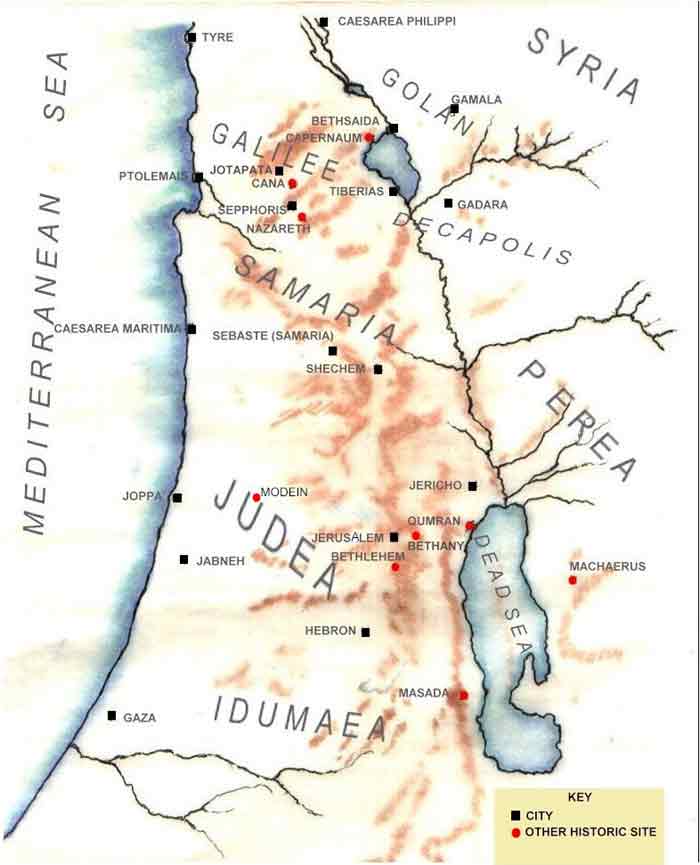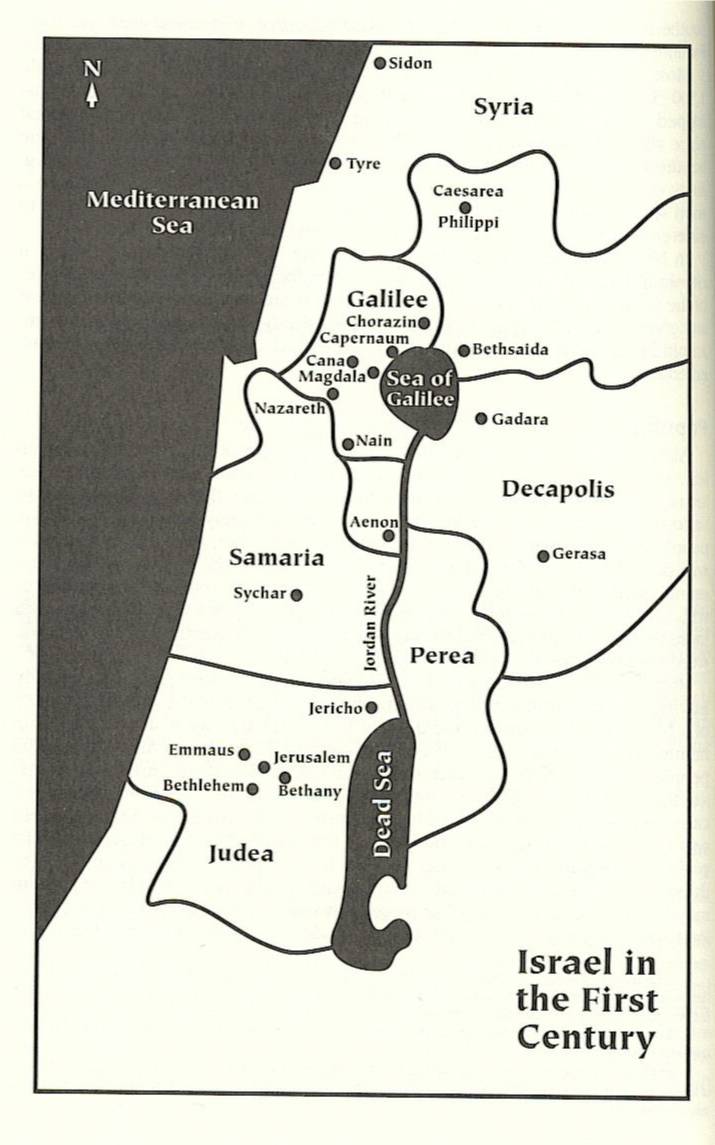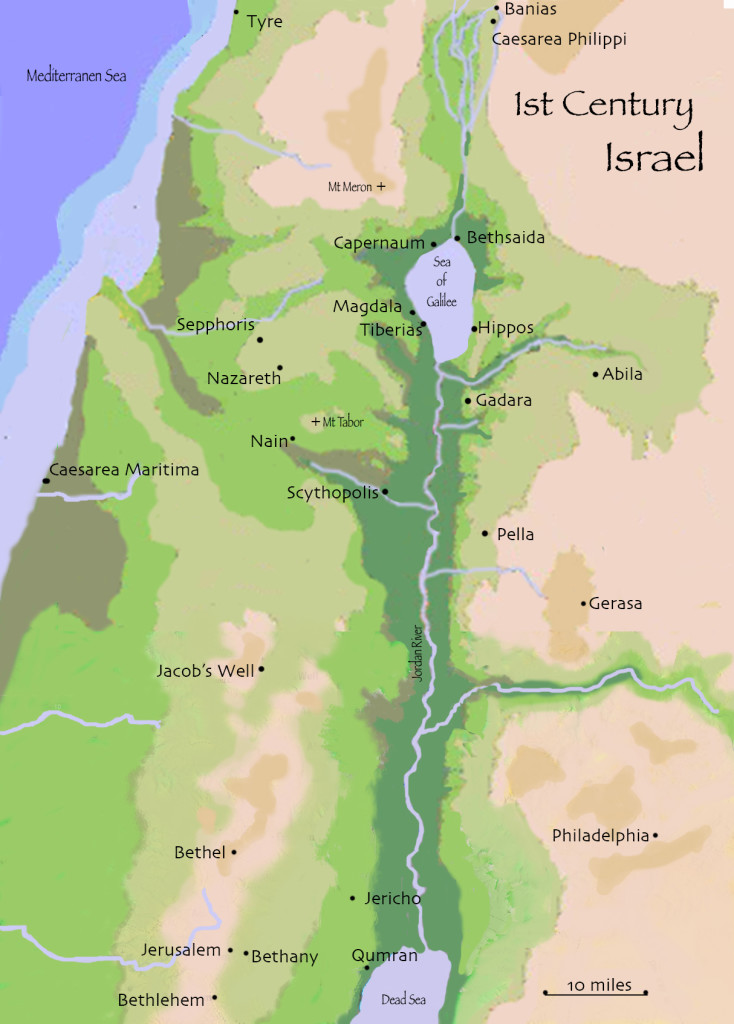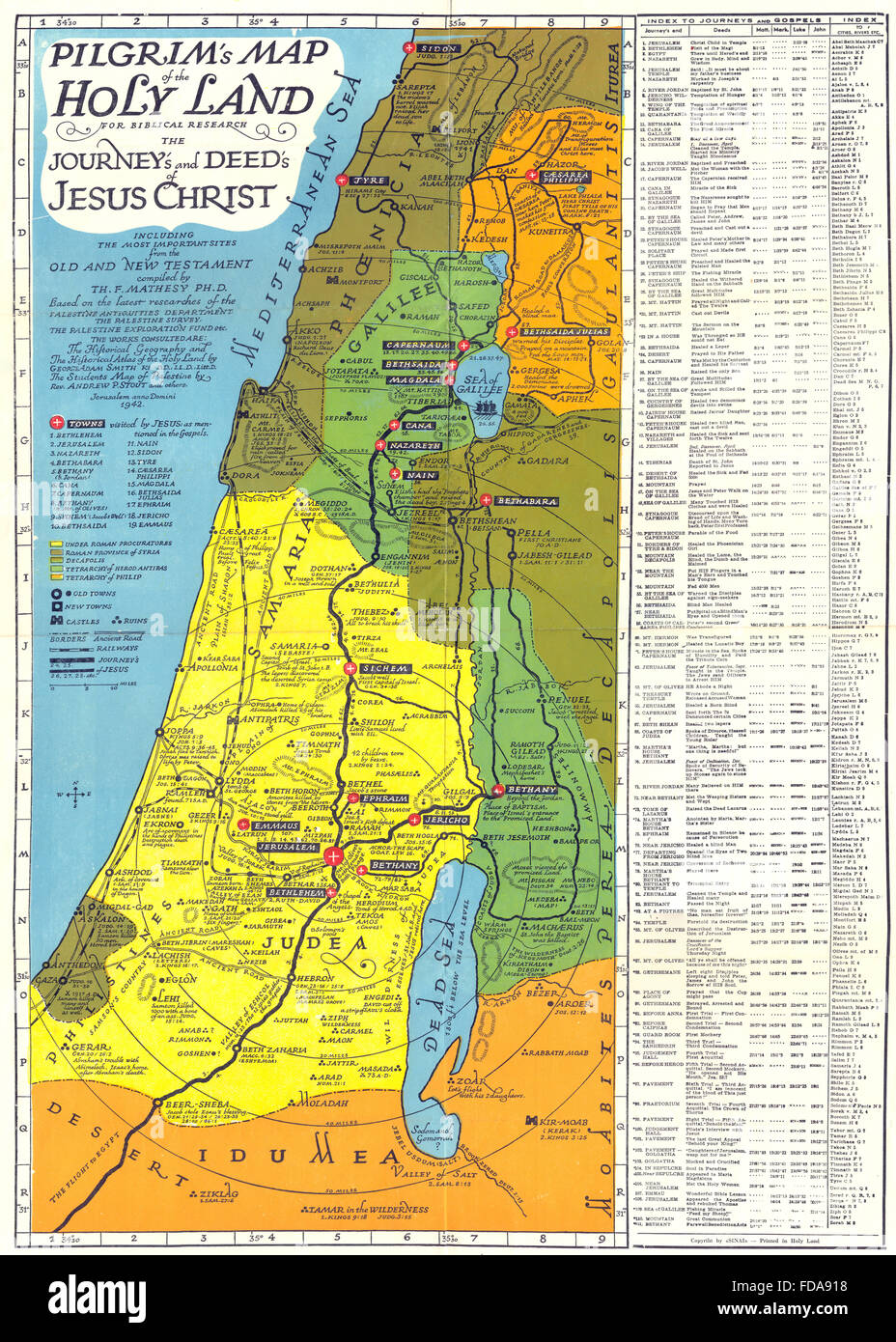Navigating The Land Of Jesus: A Geographical Exploration Of First-Century Israel
Navigating the Land of Jesus: A Geographical Exploration of First-Century Israel
Related Articles: Navigating the Land of Jesus: A Geographical Exploration of First-Century Israel
Introduction
With great pleasure, we will explore the intriguing topic related to Navigating the Land of Jesus: A Geographical Exploration of First-Century Israel. Let’s weave interesting information and offer fresh perspectives to the readers.
Table of Content
Navigating the Land of Jesus: A Geographical Exploration of First-Century Israel

The land of Israel during the time of Jesus holds a unique place in history and faith. Understanding its geography is crucial for appreciating the context of Jesus’ life, ministry, and teachings. This article delves into the geographical landscape of first-century Israel, exploring its political divisions, major cities, and key geographical features, offering a comprehensive understanding of the world in which Jesus walked and preached.
Political Divisions and Major Cities:
First-century Israel was a complex mosaic of political entities, each with its own distinct character and influence. The Roman Empire held ultimate authority, but the land was divided into smaller administrative units.
- Judea: This region, centered around Jerusalem, was under the direct control of Roman procurators, like Pontius Pilate. It was a volatile region, often in conflict with Roman rule.
- Galilee: Located in the north, Galilee was a predominantly Jewish region, with a diverse population including fishermen, farmers, and merchants. It was considered a more rural and less politically volatile area compared to Judea.
- Samaria: Situated between Judea and Galilee, Samaria was a region inhabited by a mixed population of Jews and Samaritans, who had their own distinct religious beliefs. It was a region of tension, with historical animosity between Jews and Samaritans.
- Perea: East of the Jordan River, Perea was a region largely populated by Jewish communities. It was known for its agricultural richness and its proximity to the Roman city of Philadelphia.
- Decapolis: This region, located east of the Jordan River and encompassing ten Greek cities, was a predominantly Gentile area, with its own distinct cultural and religious practices.
Within these political divisions, several major cities played a significant role in the life of Jesus and the early Christian movement:
- Jerusalem: The capital of Judea and a sacred city for Jews, Jerusalem was the site of the Temple, the center of Jewish religious life. It was also a center of political intrigue and conflict with the Roman authorities.
- Nazareth: Located in Galilee, Nazareth was the hometown of Jesus, where he grew up and began his ministry.
- Capernaum: Situated on the shores of the Sea of Galilee, Capernaum was a bustling fishing town and a focal point of Jesus’ ministry.
- Bethlehem: Located in Judea, Bethlehem was the birthplace of Jesus, a town known for its connection to the story of David, a revered king in Jewish tradition.
- Bethsaida: Situated on the northern shore of the Sea of Galilee, Bethsaida was another important center for Jesus’ ministry.
- Tiberias: Located on the western shore of the Sea of Galilee, Tiberias was a thriving city, known for its hot springs and its connections to Roman culture.
Key Geographical Features:
The geography of first-century Israel played a significant role in shaping the lives of its inhabitants, influencing trade routes, agricultural practices, and cultural development.
- The Sea of Galilee: A freshwater lake in the north, the Sea of Galilee was a vital source of sustenance for the region, providing fish for local communities and serving as a major route for trade. It was also a central location for Jesus’ ministry, where he performed miracles and taught his disciples.
- The Jordan River: Flowing from the north to the south, the Jordan River was a significant geographical feature, dividing the land of Israel and serving as a symbolic boundary between Galilee and Judea. It was also the location of Jesus’ baptism by John the Baptist.
- The Dead Sea: Situated in the south, the Dead Sea is a salt lake known for its high salinity and its therapeutic properties. It was a source of salt and other minerals, and it was also a significant trade route connecting Judea with the east.
- The Judean Desert: A desolate and harsh region south of Jerusalem, the Judean Desert was a place of refuge for Jewish rebels and a site of significant religious significance.
- The Negev Desert: Located in the south, the Negev Desert was a vast and arid region, with a sparse population and limited resources. It was a challenging environment, but it played a role in the development of trade routes and agricultural practices.
Understanding the Impact:
By understanding the geographical landscape of first-century Israel, we gain a deeper appreciation for the context of Jesus’ life and teachings. The land shaped the lives of its inhabitants, influencing their livelihoods, their social interactions, and their religious beliefs.
- The Sea of Galilee: The Sea of Galilee was not only a source of food and transportation but also a symbol of abundance and hope. Jesus’ ministry on its shores highlighted the transformative power of his teachings and the potential for renewal.
- Jerusalem: The city of Jerusalem was the center of Jewish religious life, a place of pilgrimage and devotion. It was also a site of conflict and tension, reflecting the complex political and religious dynamics of the time.
- The Judean Desert: The Judean Desert was a place of solitude and reflection, where Jesus was said to have spent time in prayer and contemplation. It was also a place of hardship and suffering, reminding us of the challenges faced by those who followed Jesus’ teachings.
The Enduring Significance:
The geographical landscape of first-century Israel continues to hold significance for Christians today. It provides a tangible connection to the life and ministry of Jesus, offering a deeper understanding of his teachings and the challenges faced by his followers.
FAQs:
-
Q: What was the primary language spoken in first-century Israel?
- A: The primary language spoken in first-century Israel was Aramaic, although Greek was also widely spoken, particularly in urban areas.
-
Q: What were the major trade routes in first-century Israel?
- A: Major trade routes connected first-century Israel with other regions, including the Roman Empire, Egypt, and Mesopotamia. The Sea of Galilee, the Jordan River, and the Dead Sea were important waterways for trade.
-
Q: What were the main agricultural products grown in first-century Israel?
- A: First-century Israel was known for its agricultural productivity, with major crops including grapes, olives, figs, wheat, and barley.
Tips:
- Use maps and visual aids: Maps of first-century Israel can provide a visual understanding of the geographical landscape and the locations of key cities and regions.
- Read historical accounts: Historical accounts from the time of Jesus, such as the writings of Josephus and the Gospels, can provide insights into the political, social, and cultural context of the land.
- Visit Israel: Visiting Israel today offers a firsthand experience of the land and its people, providing a deeper understanding of the geographical and cultural context of Jesus’ life and ministry.
Conclusion:
The geographical landscape of first-century Israel is more than just a historical backdrop. It is a living testament to the context in which Jesus lived, taught, and died. By understanding the land, its people, and its challenges, we gain a deeper appreciation for the significance of Jesus’ teachings and the enduring impact of his message on the world.


![Map of Palestine in the time of Jesus (4 B.C - 30 A.D); Year of the Map : [1912] : r/MapPorn](https://i.redd.it/7o14vfa4br481.jpg)





Closure
Thus, we hope this article has provided valuable insights into Navigating the Land of Jesus: A Geographical Exploration of First-Century Israel. We hope you find this article informative and beneficial. See you in our next article!